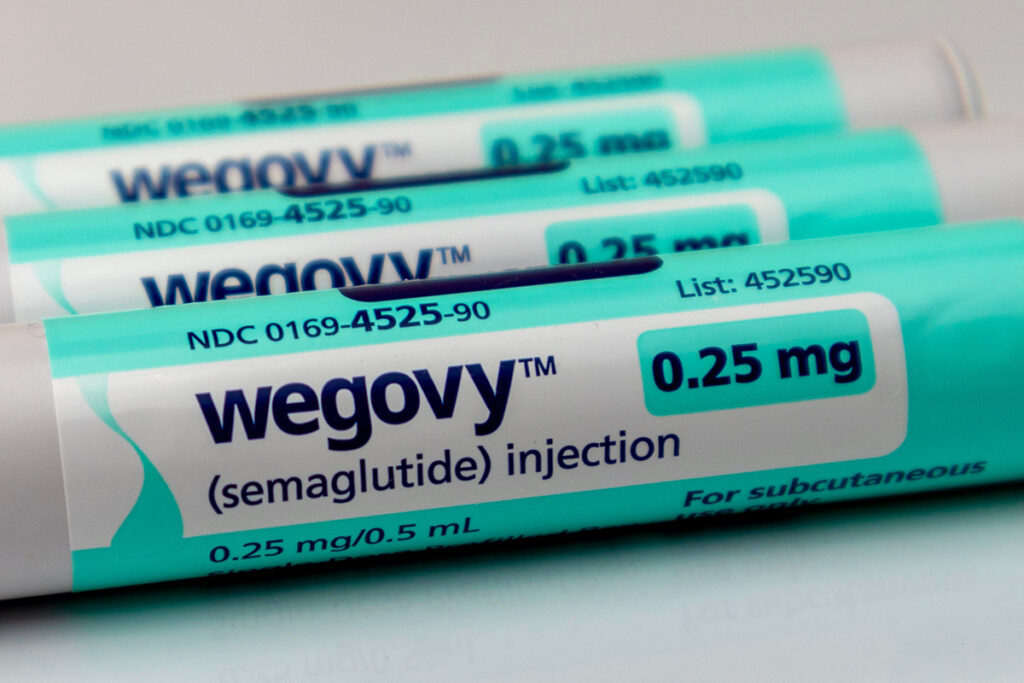Editor’s Note: This perspective was originally published on STAT on April 3, 2024.
The latest weight loss drugs are good. Really good. They can save lives and could literally remake American health. But rather than celebrate, we’re having a political conversation that is all about price controls. Oscar Wilde’s warning is timely: Beware the fool who knows the price of everything and the value of nothing.
We and several of our colleagues have studied the new weight loss drugs, known as GLP-1s, like Wegovy (semaglutide) and Zepbound (tirzepatide), and modeled their impact. They represent huge value in treating obesity. More than 40% of adults in the U.S. have obesity; another one-third are overweight. An estimated 300,000 Americans die from obesity-related conditions each year.
Individuals with obesity participating in a clinical trial of Wegovy safely lost 15% or more of their body weight, with similar results for other medications like Zepbound. The benefit of these drugs extends beyond weight loss. For example, the FDA recently approved the use of Wegovy to treat people with heart disease.
The initial list prices of around $15,000 a year provoked doomsday fiscal scenarios. One estimate suggested that Medicare Part D would take a hit of $268 billion per year by covering these weight loss drugs. Another figured that the cost to the federal government would top $1 trillion per year.
The answer some have proposed? Federal intervention through Medicare to set prices at $3,500 or lower.
But such analyses rely on inaccurate information and grossly underestimate the savings associated with a healthier populace. Most assume little or no price rebates in the private insurance market for GLP-1 therapies, despite recent evidence that these drugs sell for 48% to 79% below list prices. Most of the alarmist estimates also assume that prices will remain constant over the lifetime of new drugs. They won’t — not if growing competition drives down costs.
Witness what played out with breakthrough therapies for hepatitis C and HIV. When Sovaldi was approved as a cure for hepatitis C, its $84,000 price tag — $1,000 per pill — triggered Congressional probes and countless articles slamming its manufacturer, Gilead. Yet within 12 months, AbbVie launched a competitor drug and net prices fell by almost half. Similarly, HIV treatments at their launch cost more than $1,000 per month. Generic versions now sell for $69 per month or less. Comparable stories can be told for treatment for high blood pressure, high cholesterol, and other diseases.
After years of treatment, the immense value generated by these therapies dwarfs their initial costs. In other words, competition works.
Price controls can work in the short run to help affordability. But in the long run, they suppress innovation and cost lives.
Implementing European-style controls in the U.S. would lower average life expectancies by a half year or more as a result of reduced incentives to make drug discoveries.
There is something government can do. It could begin by allowing coverage of weight loss drugs in Medicare Part D plans and Medicare Advantage plans. Research at the USC Schaeffer Center, which we are affiliated with, shows that Medicare coverage of weight loss therapies alone — with no additional impacts on private insurance coverage — would generate almost $1 trillion in social benefits over the next 10 years. If private insurance were to follow Medicare’s lead, as it often does, the benefits would be even greater, as people would be able to treat their obesity before it leads to costly chronic health conditions.
The government could also promote broader coverage in the private insurance market through an updated review of weight loss treatments by the U.S. Preventive Services Task Force, a panel of national experts that makes evidence-based recommendations about clinical preventive services. Preventive care that receives a high rating from the task force must be covered under the Affordable Care Act. The most recent USPSTF review of treatments for weight loss to prevent obesity-related comorbidities and mortality predates the introduction of newer GLP-1 drugs. These new anti-obesity drugs are far more effective than their predecessors, and may receive a higher recommendation from the task force.
In the meantime, creative market solutions can expand access to these drugs. Allowing prices to rise and fall with effectiveness — so-called value-based pricing — would be a start. Efficient markets ensure that mechanics won’t get paid if they can’t fix cars, and the same common-sense logic should apply to prescription drug markets.
GLP-1 drugs present a historic opportunity to create value for people with obesity, their families, and the nation as long as society can effectively share them across the health care marketplace. In the other direction, government price controls would increase the odds that society won’t have the chance to face an opportunity like this again.
Dana Goldman is the director of the USC Schaeffer Institute for Public Policy & Government Service. Alison Sexton Ward is a research scientist at the USC Schaeffer Center for Health Policy & Economics. Goldman reports receiving grants or consulting fees from Cedars-Sinai Health System, the National Institutes of Health, and various pharmaceutical companies.
Sign up for Schaeffer Center news



